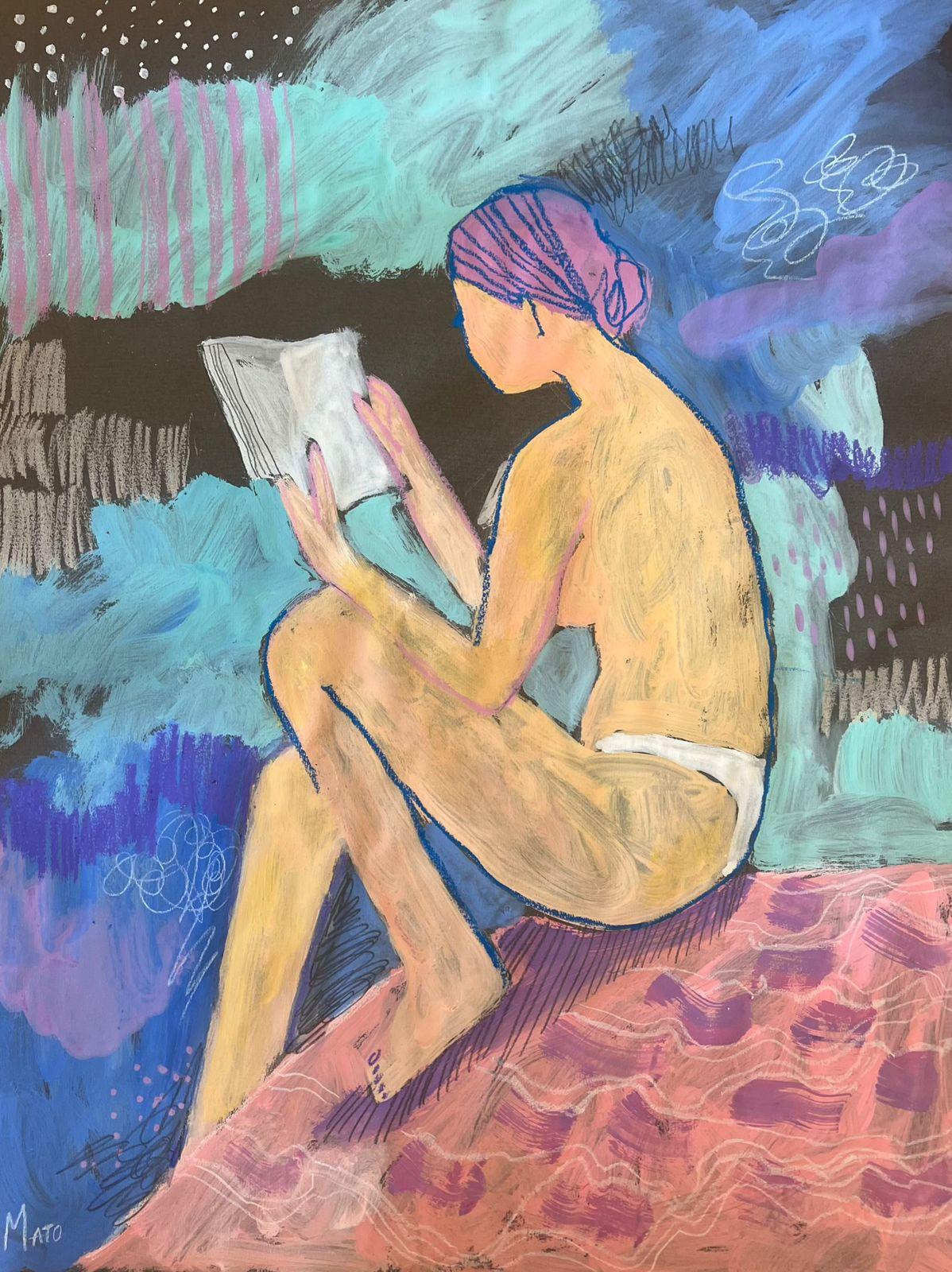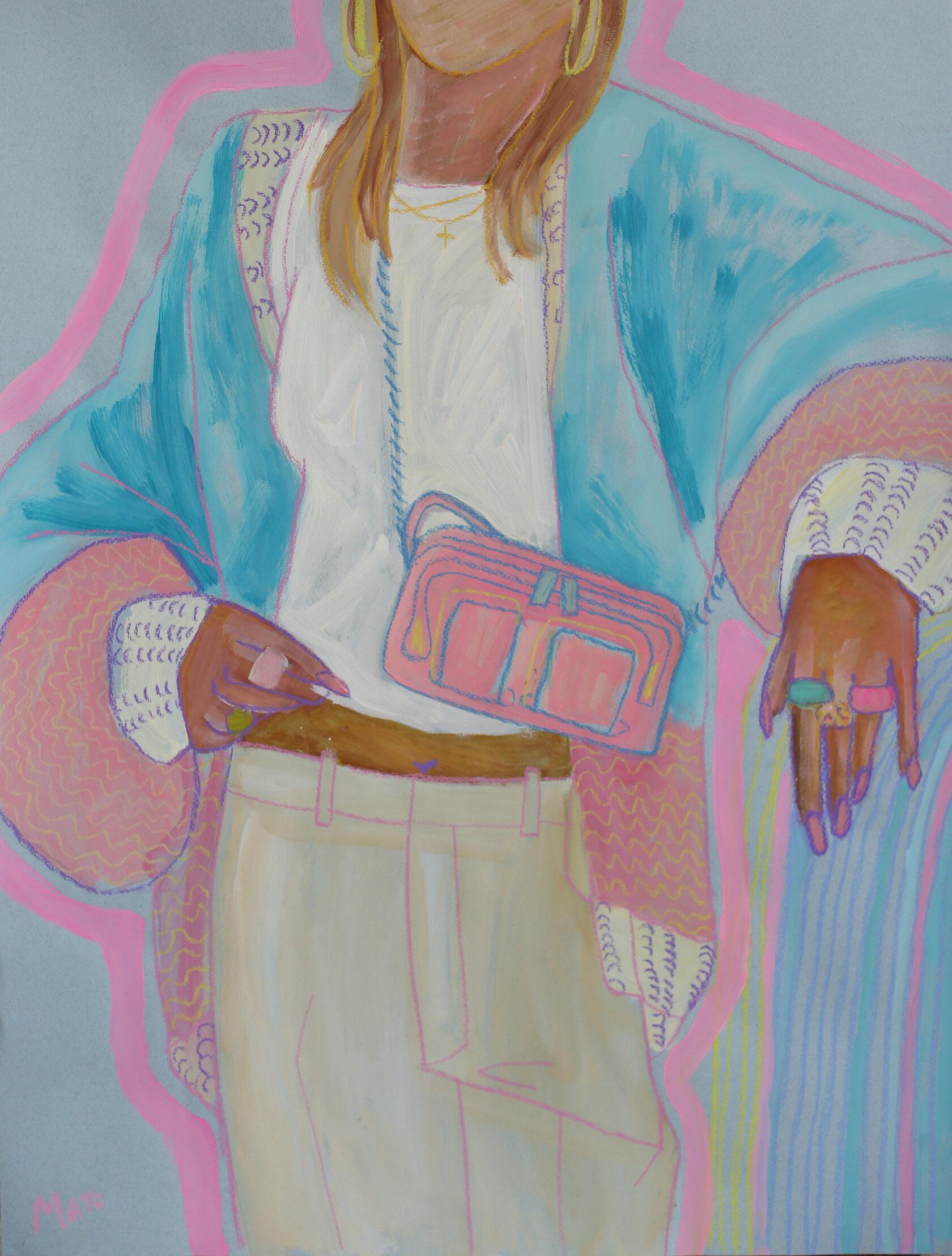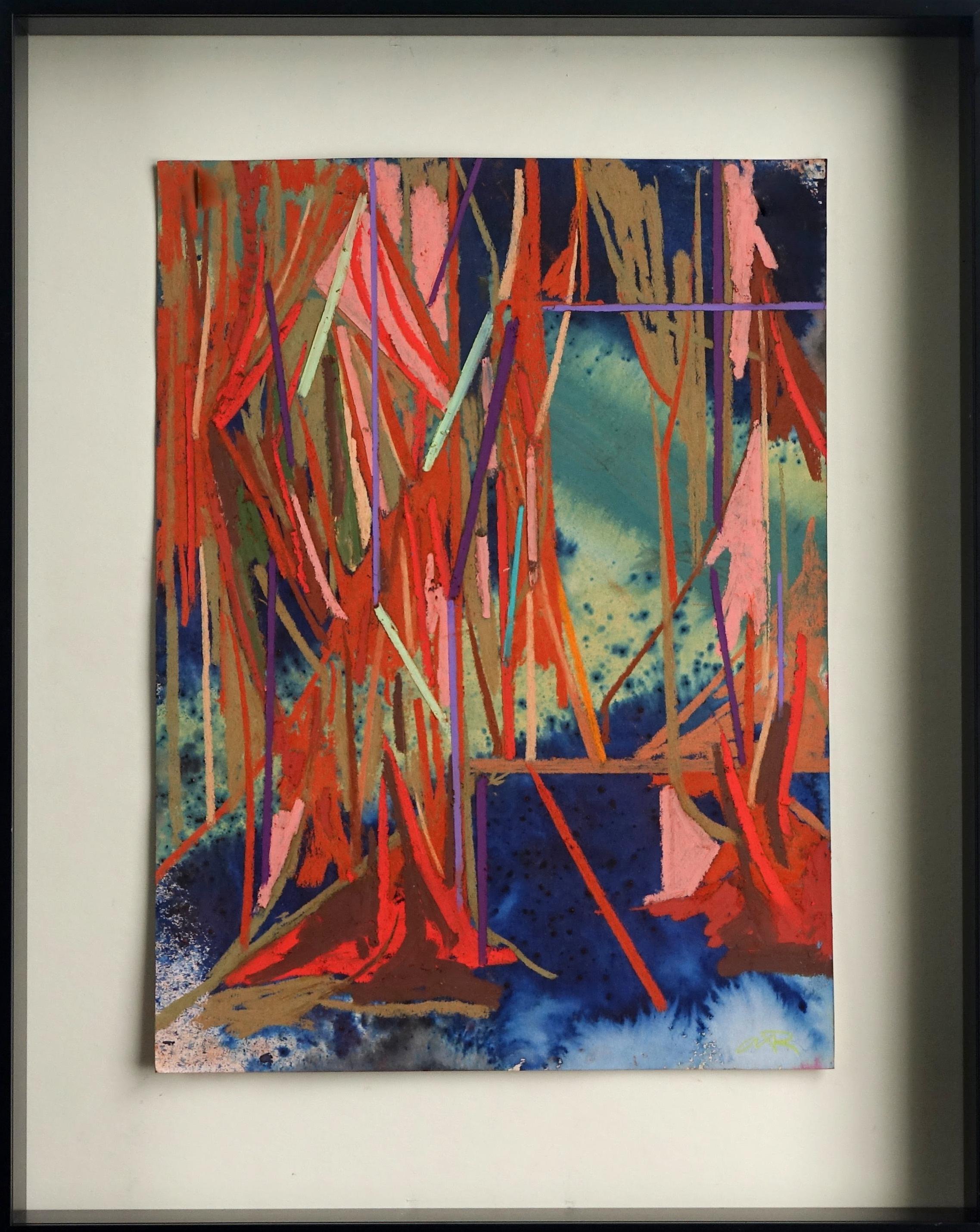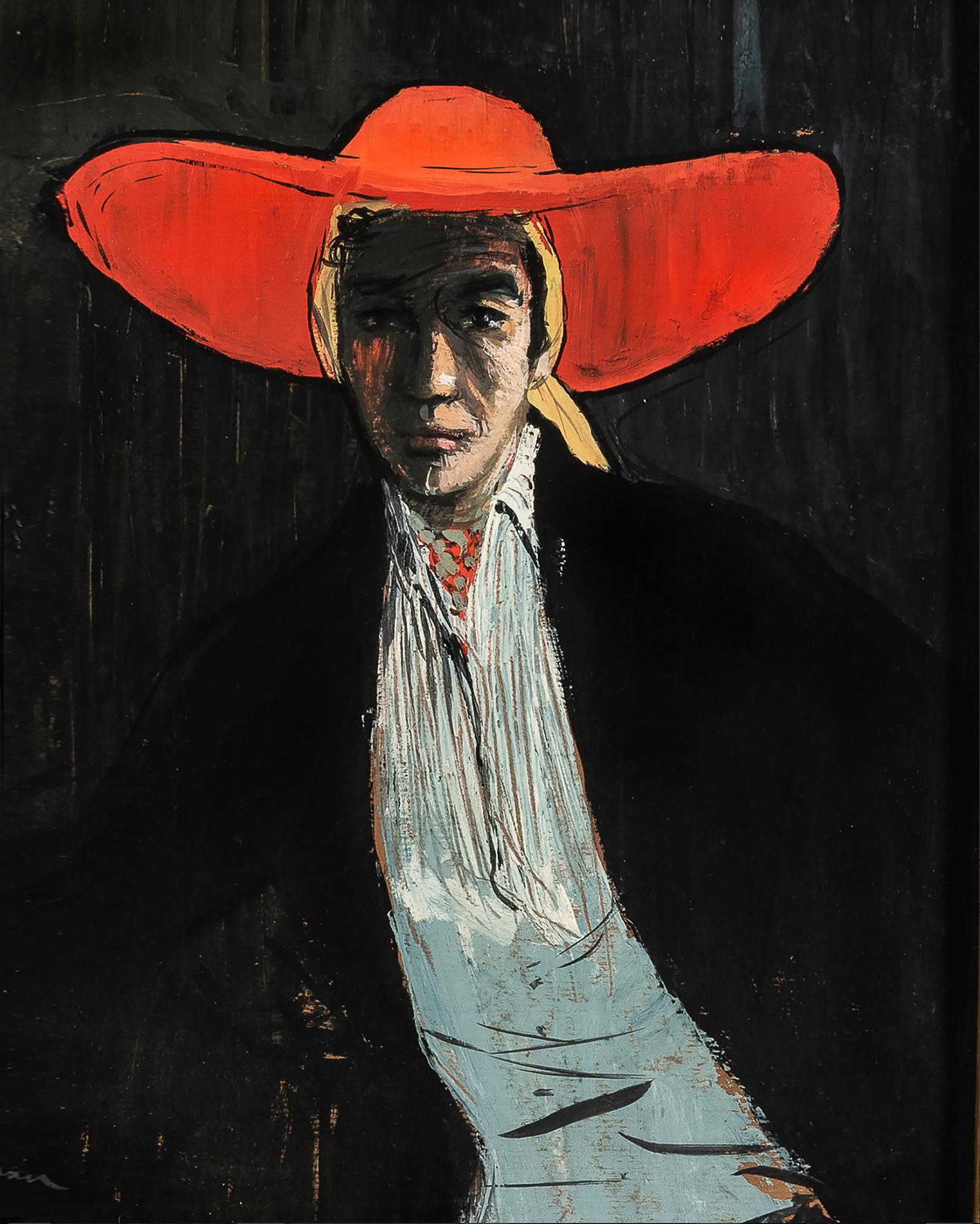Items Similar to Still life , 65x50cm
Want more images or videos?
Request additional images or videos from the seller
1 of 5
Aleksandra MatoStill life , 65x50cm
About the Item
Still life
- Creator:
- Dimensions:Height: 25.6 in (65 cm)Width: 19.69 in (50 cm)
- Medium:
- Movement & Style:
- Period:
- Condition:
- Gallery Location:Yerevan, AM
- Reference Number:1stDibs: LU1514213047692
About the Seller
4.9
Platinum Seller
These expertly vetted sellers are 1stDibs' most experienced sellers and are rated highest by our customers.
Established in 2019
1stDibs seller since 2021
227 sales on 1stDibs
Typical response time: <1 hour
- ShippingRetrieving quote...Ships From: Yerevan, Armenia
- Return PolicyA return for this item may be initiated within 14 days of delivery.
More From This SellerView All
- Girl with a book , 65x50cmBy Aleksandra MatoLocated in Yerevan, AMGirl with a bookCategory
2010s Contemporary Figurative Paintings
MaterialsPaper, Pastel, Gouache
- Girl in a blue cardigan, 65x50cmBy Aleksandra MatoLocated in Yerevan, AM65x50 cmCategory
2010s Contemporary Figurative Paintings
MaterialsPaper, Pastel, Gouache
- Catch a deer, 78x54cmBy Elena NaushirvanovaLocated in Yerevan, AMCatch a deer, 2023, 78x54 cmCategory
2010s Abstract More Art
MaterialsPaper, Pastel, Acrylic
- Talking until midnight, 78x54cmBy Elena NaushirvanovaLocated in Yerevan, AMTalking until midnight, 2023, 78x54 cmCategory
2010s Abstract More Art
MaterialsPaper, Pastel, Acrylic
- Heat, 78x54cmBy Elena NaushirvanovaLocated in Yerevan, AMHeat, 2021, 78x54 cmCategory
2010s Abstract More Art
MaterialsPaper, Pastel, Acrylic
- Life with a cat, 78x54cmBy Elena NaushirvanovaLocated in Yerevan, AMLife with a cat, 2023, 78x54 cmCategory
2010s Abstract More Art
MaterialsPaper, Pastel, Acrylic
You May Also Like
- SCAFFOLD (3) - Framed, Linear, Abstract Mixed Media Painting/Drawing on PaperBy Austin ReavisLocated in Signal Mountain, TNThis drawing by Austin Reavis is from a series of abstract works that build lines and forms, suggestive of construction elements, as a foreground to chan...Category
2010s Contemporary Abstract Paintings
MaterialsPaper, Pastel, Watercolor, Gouache
- Mary Had a Little LambLocated in Columbia, MOOne of the most prolific and acclaimed illustrators of the 20th century, Mark English produced work for such publications as McCalls, Time, Sports Illustrated, and Redbook before co-...Category
1980s Contemporary Landscape Paintings
MaterialsPastel, Gouache, Illustration Board
- Figure in a Wide-brimmed Red HatBy René GruauLocated in Miami, FLElegant and graphic study of a figure of undetermined gender. It's executed with quick and confident brush strokes in the artist's signature color scheme of black and red. It's a fla...Category
1960s Contemporary Portrait Paintings
MaterialsMixed Media, Pastel, Gouache, Board
- In the Village, Gouache on Paper, Pink & Red color by Gobardhan Ash "In Stock"By Gobardhan AshLocated in Kolkata, West BengalGobardhan Ash - Untitled - Gouache on Paper 10 x 15 inches (unframed size) Style : Regarded as a pioneer of modern Indian art, Ash’s contribution at the time when India witnessed the advent of Western modernism is significant and colossal. His work was exploratory, visionary and inspiring. He printed with bold courage and a free spirit, never yielding to the rules set by official art. He rejected the preconceived notions of how an artist ought to render his subjects and inevitably rebelled against the academic rules “ If we look at nature in the open, we do not see individual objects each with its own colors but rather a bright medley of tints which blend in our eyes, in our minds.” – Gobardhan Ash (The Statesman, April 24, 1994). His verbal imagery alluded to what was real and relevant in India yet transcended to communicate a deeper, universal message about the human spirit. Disillusioned with the limits and constraints he faced, Ash withdrew into his private introspective world to explore his own mode of artistic expression. And although it was the convention then to paint divinities or exotic female figures on their way to the temple, Ash embarked on a new approach altogether to paint farmers toiling in the fields, workers engaged in intense labor to earn their living, thereby setting a new trend of socio-realistic art in India. In 1945, Ash was brought into the public eye when the progressive writers Association discovered his series of paintings on the Bengal famine. The paintings depict, if not document, the ravages of the 1943 catastrophe. In juxtaposition to the famine series, his impressionist and post impressionist gouaches during the late 40s come as an interesting antithesis. Colors, rich and vibrant, come alive in a pulsating tone to dominate the entire painting. Ash never subscribed to a stringent artistic form or technique. Rather, his works from the 80s display yet another intriguing and jarringly different style in his treatment of portraiture. His colors, with the exception of the apparent outlines, are reduced to smudges and smears so that the painting appear to originate from stained canvas. His subjects, spectral figures that engage and draw us within their profound state of despair and helplessness. To characterize the life works of Gobardhan Ash is to recognize the complexity and spontaneity of his ideas and the enormous richness of his style. An artist who devoted his entire life to art, his paintings have transited and evolved from monochromatic sketches and landscape to portraiture; from naturalistic real-life depictions to abstract expressionism. Whatever the genre style-Ash has demonstrated an eloquent mastery over the diverse style, techniques and medias employed, as evident in the vast retrospective collection. His paintings are conceptual and purposeful, displaying a unique individuality. His art expounds a frank desire to convey the value of uncompromising artistic sincerity. Gobardhan Ash remains today a prolific artist of his time. About the Artist & his works : Born : Regarded as a pioneer of modern Indian art, Gobardhan Ash (1907-1996) was born at the village of Begampur in Hoogly district of West Bengal.. Family : His father was Haricharan Ash and mother Gouri Devi. He spent all his life in this village and died here in 1996 at the matured age...Category
1980s Modern Figurative Paintings
MaterialsPaper, Pastel, Gouache
- Rare Modernist Hungarian Rabbi Pastel Drawing Gouache Painting Judaica Art DecoBy Hugó ScheiberLocated in Surfside, FLRabbi in the synagogue at prayer wearing tallit and tefillin. Hugó Scheiber (born 29 September 1873 in Budapest – died there 7 March 1950) was a Hungarian modernist painter. Hugo Scheiber was brought from Budapest to Vienna at the age of eight where his father worked as a sign painter for the Prater Theater. At fifteen, he returned with his family to Budapest and began working during the day to help support them and attending painting classes at the School of Design in the evening, where Henrik Papp was one of his teachers. He completed his studies in 1900. His work was at first in a post-Impressionistic style but from 1910 onward showed his increasing interest in German Expressionism and Futurism. This made it of little interest to the conservative Hungarian art establishment. However, in 1915 he met the great Italian avant-gardist Filippo Tommaso Marinetti and the two painters became close friends. Marinetti invited him to join the Futurist Movement. The uniquely modernist style that he developed was, however, closer to German Expressionism than to Futurism and eventually drifted toward an international art deco manner similar to Erté's. In 1919, he and his friend Béla Kádar held an exhibition at the Hevesy Salon in Vienna. It was a great success and at last caused the Budapest Art Museum to acquire some of Scheiber's drawings. Encouraged, Scheiber came back to live in Vienna in 1920. A turning point in Scheiber's career came a year later, when Herwarth Walden, founder of Germany's leading avant-garde periodical, Der Sturm, and of the Sturm Gallery in Berlin, became interested in Scheiber's work. Scheiber moved to Berlin in 1922, and his paintings soon appeared regularly in Walden's magazine and elsewhere. Exhibitions of his work followed in London, Rome, La Paz, and New York. Scheiber's move to Germany coincided with a significant exodus of Hungarian artists to Berlin, including Laszlo Moholy-Nagy and Sandor Bortnyik. There had been a major split in ideology among the Hungarian avant-garde. The Constructivist and leader of the Hungarian avantgarde, Lajos Kassák (painted by Hugó Scheiber in 1930) believed that art should relate to all the needs of contemporary humankind. Thus he refused to compromise the purity of his style to reflect the demands of either the ruling class or socialists and communists. The other camp believed that an artist should be a figurehead for social and political change. The fall out and factions that resulted from this politicisation resulted in most of the Hungarian avant gardists leaving Vienna for Berlin. Hungarian émigrés made up one of the largest minority groups in the German capital and the influx of their painters had a significant effect on Hungarian and international art. Another turning point of Scheiber's career came in 1926, with the New York exhibition of the Société Anonyme, organized by Katherine Dreier. Scheiber and other important avant garde artists from more than twenty-three countries were represented. In 1933, Scheiber was invited by Marinetti to participate in the great meeting of the Futurists held in Rome in late April 1933, Mostra Nazionale d’Arte Futurista where he was received with great enthusiasm. Gradually, the Hungarian artists began to return home, particularly with the rise of Nazism in Germany. Kádar went back from Berlin in about 1932 and Scheiber followed in 1934. He was then at the peak of his powers and had a special flair in depicting café and cabaret life in vivid colors, sturdily abstracted forms and spontaneous brush strokes. Scheiber depicted cosmopolitan modern life using stylized shapes and expressive colors. His preferred subjects were cabaret and street scenes, jazz musicians, flappers, and a series of self-portraits (usually with a cigar). his principal media being gouache and oil. He was a member of the prestigious New Society of Artists (KUT—Képzőművészek Új Társasága)and seems to have weathered Hungary's post–World War II transition to state-communism without difficulty. He continued to be well regarded, eventually even receiving the posthumous honor of having one of his images used for a Russian Soviet postage stamp (see image above). Hugó Scheiber died in Budapest in 1950. Paintings by Hugó Scheiber form part of permanent museum collections in Budapest (Hungarian National Museum), Pecs (Jannus Pannonius Museum), Vienna, New York, Bern and elsewhere. His work has also been shown in many important exhibitions, including: "The Nell Walden Collection," Kunsthaus Zürich (1945) "Collection of the Société Anonyme," Yale University Art Gallery, New Haven, Connecticut (1950) "Hugó Scheiber: A Commemorative Exhibition," Hungarian National Museum, Budapest (1964) "Ungarische Avantgarde," Galleria del Levante, Munich (1971) "Paris-Berlin 1900-1930," Centre Georges Pompidou, Paris (1978) "L’Art en Hongrie, 1905-1920," Musée d’Art et l’Industrie, Saint-Etienne (1980) "Ungarische Avantgarde in der Weimarer Republik," Marburg (1986) "Modernizmus," Eresz & Maklary Gallery, Budapest (2006) "Hugó Scheiber & Béla Kádár," Galerie le Minotaure, Paris and Tel Aviv (2007) Hugó Scheiber's paintings continue to be regularly sold at Sotheby's, Christie's, Gillen's Arts (London), Papillon Gallery (Los Angeles) and other auction houses. He was included in the exhibition The Art Of Modern Hungary 1931 and other exhibitions along with Vilmos Novak Aba, Count Julius Batthyany, Pal Bor, Bela Buky, Denes Csanky, Istvan Csok, Bela Czobel, Peter Di Gabor, Bela Ivanyi Grunwald, Baron Ferenc Hatvany, Lipot Herman, Odon Marffy, C. Pal Molnar...Category
Early 20th Century Modern Figurative Paintings
MaterialsPaper, Charcoal, Pastel, Watercolor, Gouache
- Polish Expressionist Profile Portrait Drawing TWO CHILDRENBy Josef PresserLocated in Surfside, FLGenre: Other Subject: Figures Medium: Other, Gouache Surface: Paper Country: United States sight size 17 X 13 inches Emigrating to Boston in 1913 from Poland with his Russian-Jewis...Category
Mid-20th Century Expressionist Figurative Paintings
MaterialsPaper, Pastel, Gouache





